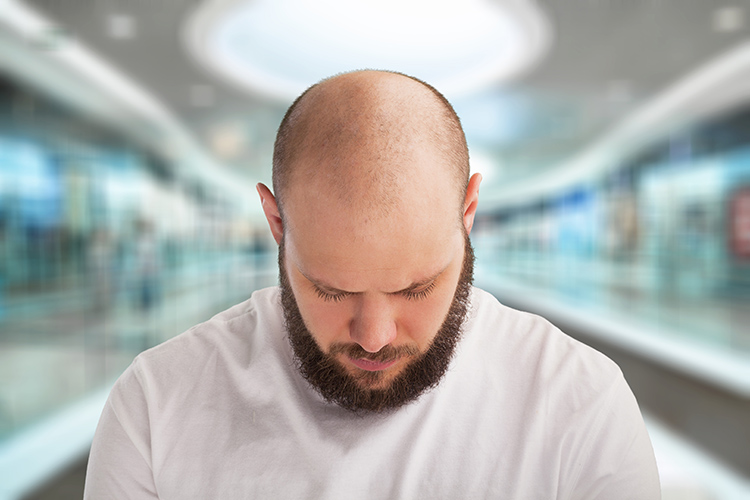
Full Body HIIT Gym Workout Plan – 45-Minute Power Circuit

Best 45 Minute Full Body Circuit Training Workout for Men

35-Minute Advanced Circuit Workout for Strength & Endurance

Best Full Body Circuit Weight Training Routine for Muscle
Why Do Men Go Bald And What To Do About It

Hair loss, especially in men, is a common yet often misunderstood topic. Going bald for men can be a cause of anxiety and stress for many, but understanding why it occurs and how to cope with it can alleviate much of this concern. In this blog, we will delve into the reasons behind male pattern baldness, explore the various treatment options, and provide practical advice for those experiencing hair loss.
Why Do Men Go Bald And What To Do About It
The Science Behind Male Pattern Baldness
Genetics The primary factor responsible for male pattern baldness is genetics. A gene called the androgen receptor (AR) is located on the X chromosome, which men inherit from their mothers. Studies show that men with a family history of baldness are more likely to experience hair loss.
Hormones Another significant contributor to male pattern baldness is the hormone dihydrotestosterone (DHT). DHT is a derivative of testosterone and is responsible for hair follicle miniaturization. This process causes hair follicles to shrink over time, eventually leading to hair loss.
Age Age plays a considerable role in some men who go bald, with the risk of male pattern baldness increasing as men grow older. Research indicates that more than 50% of men over the age of 50 experience some degree of hair loss.
Signs and Stages of Balding
Male pattern baldness typically follows a predictable pattern. The process usually starts with a receding hairline, followed by thinning on the crown of the head. Eventually, the balding areas merge, resulting in a horseshoe-shaped pattern of remaining hair.
The Norwood scale is a widely recognized classification system for male pattern baldness, ranging from stage 1 (no significant hair loss) to stage 7 (advanced balding). Identifying the stage of hair loss can help determine the most appropriate treatment options.
Treatment Options for Hair Loss
Medications There are two FDA-approved medications for treating male pattern baldness: Minoxidil (Rogaine) and Finasteride (Propecia). Both medications have been proven to slow down hair loss and promote hair regrowth to varying degrees. It is essential to consult with a healthcare professional before starting any medication to discuss potential side effects and determine the best course of action for men who go bald.
Hair Transplant Surgery Hair transplant surgery involves removing healthy hair follicles from one part of the scalp and transplanting them to the balding areas. There are two primary methods of hair transplantation: Follicular Unit Transplantation (FUT) and Follicular Unit Extraction (FUE). Both techniques have their pros and cons, and a consultation with a hair transplant specialist can help determine the best approach.
Low-Level Laser Therapy (LLLT) LLLT is a non-invasive treatment option that uses red light to stimulate hair growth by increasing blood flow to the hair follicles. While LLLT may not be as effective as medication or hair transplant surgery, it can be a suitable option for those seeking a non-surgical, drug-free solution.
Platelet-Rich Plasma (PRP) Therapy PRP therapy involves injecting a concentration of the patient’s platelets into the scalp to stimulate hair growth. The platelets release growth factors that promote hair follicle regeneration and prolong the hair growth cycle. Although PRP therapy shows promise, more research is needed to determine its long-term effectiveness.
IV. Coping with Hair Loss
Embrace the Bald Look For some men, embracing the bald look can be a liberating and empowering choice. Shaving the head or keeping hair very short can create a stylish, low-maintenance appearance.
Invest in Hairpieces or Wigs High-quality hairpieces or wigs can provide a temporary or long-term solution for those looking to maintain a full head of hair. Modern hairpieces are made from natural or synthetic materials, designed to be comfortable and realistic-looking.
Experiment with Different Hairstyles Working with a skilled hairstylist can help you find a flattering hairstyle that minimizes the appearance of thinning hair. Techniques such as adding layers, using hair-thickening products, and employing strategic styling can create the illusion of fuller hair.
Focus on Overall Health and Well-being Maintaining a healthy lifestyle can have a positive impact on your hair health. Eating a balanced diet rich in vitamins and minerals, getting regular exercise, and managing stress can help improve the condition of your hair and overall well-being.
Seek Support and Professional Help Coping with hair loss can be emotionally challenging. It’s essential to talk to friends, family, or a therapist about your feelings and seek their support. Additionally, consult with a dermatologist or hair loss specialist for expert guidance and personalized treatment options.
Male pattern baldness is a common condition that affects millions of men worldwide. Although it can be a source of stress and anxiety, understanding its causes and exploring the various treatment options can help mitigate its impact. Whether you choose to embrace the man bald look, explore medical treatments, or opt for cosmetic solutions, the key is to find an approach that works for you and helps boost your confidence and self-esteem. Remember, hair loss does not define your worth or attractiveness, and seeking support from loved ones and professionals can make a significant difference in your journey to accepting and dealing with hair loss.
Most Recommended
Subscribe to our Newsletter
Stay up to date on the latest men’s health, fitness and lifestyle trends and tips.
About Us
Men’s Fit Club was started with the goal of empowering men to get the most out of their lives. This meant going beyond exercise and diet tips to really address the broad range of issues that men face on a daily basis – topics like recreation, finding love, sexual health and even sound fashion advice.
Quick Links
© COPYRIGHT MEN'S FIT CLUB 2025. All Rights Reserved

